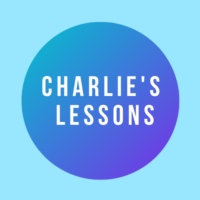In this post, we’re going through the things that I do when I teach English to advanced students. Now, this is a post that was actually requested by one of my members from my YouTube channel. My members commented that they would like to see something on how to teach advanced students. So here it is.
Authentic Material
So the first thing I want to focus on is using as much authentic material as possible in the classroom. You can be sure that your students have used a lot of different course books, and those course books often carry graded readings or listenings.
Now, if your students are advanced, you need to be testing them in every class, and the best way to do this is to use authentic material. So luckily, we live in the 21st century, and authentic material is everywhere. You just need to go online and look for something like a podcast, a YouTube video, an article—you name it, it’s there, ready for you to use.
Think about the podcasts that you listen to. As the teacher, you never know; one episode might fit in with your students’ interests or needs, and you can share that with your students to practice listening with at home. A couple of podcasts that I love listening to are Radiolab and also This American Life, and these cover a wide range of topics, and sometimes one of these topics fits in perfectly with one of my advanced students.
I find YouTube videos where they’re asking the public opinions on certain topics really good sources of authentic English. You just need to go to YouTube and search for UK opinion people on the street or something similar, and you can find services like The Independent or The Daily Mail where they are going onto the street and speaking to people directly, and there you can show your students how people give their opinions on certain matters and how they use more authentic English. These YouTube videos will often come with transcripts so that students can have that extra support if they need it.
By the way, I don’t actually read The Daily Mail or follow it; it’s just an example.
If you teach Business English and are looking for authentic material then check out my lesson plan right here.
Vocabulary
What I want to focus on in number two is how to improve your students’ vocabulary. Now, in my experience, the biggest improvement I can make with my advanced students is how to widen their vocabulary. I like using collocation dictionaries with my students, and there are some really good ones online. I’m going to link right now. Using this when you come across new vocabulary, you can show students how it works with other words.
I also like using this website right here to show my students what level the vocabulary is that they are using. Using this website, I can show them that perhaps the vocabulary that they tend to use is actually not advanced vocabulary. What we are looking for is a C1 or C2 tag next to the word, and when we have this, we can really assure our students that this is the kind of vocabulary they need to be using more often.
Below, I’m going to show you a couple of suggestions or recommendations for course books or textbooks that can help build your students’ vocabulary.
Corrections
The third point I want to focus on is correct, correct, correct. When students get to an advanced level, they tend to hit a plateau where they are able to communicate effectively enough where if they’re in class, perhaps they’re not being corrected as much as they should.
You need to be acutely aware of everything your advanced student is saying and make notes of any errors they make. Now, this might be difficult if you’re teaching group classes and you’re not able to listen to everyone at the same time, but if you’re teaching individual students, maybe get into a habit of recording them when they are speaking for longer periods of time.
If you’re teaching online, this can be very simple—just record the meeting. And if you’re teaching a student face to face, then use a recorder on your phone. This way, you can listen back after the class and look for those little mistakes that they are still making even at this level to show your students that they can still make improvements.
Homework
Point number four is to give your students regular homework tasks. This means that they can put into practice any of the new vocabulary that they have learned, which we mentioned in point number two.
Now, this could be activities such as a speaking task where they’re recording themselves. It could be written tasks, things like writing emails, essays, articles, etc.—anything that’s going to encourage them to use this new language that you may have taught them that we talked about in point two.
If you are going to give your students writing tasks, why don’t you go check out my other post right here, which goes into how to improve your students’ writing skills?
And whenever you get these homework tasks back, make sure that you’re not just giving it straight back to them with all the corrections made. You need to encourage your student to make the corrections themselves. This means you need to use a correction code. This is where you direct students toward what kind of mistake they’ve made, but don’t just give them the correction. You need to make sure that they are giving you the correction.
Thank you for reading on this post on things I keep in mind when I’m teaching English to advanced students.
